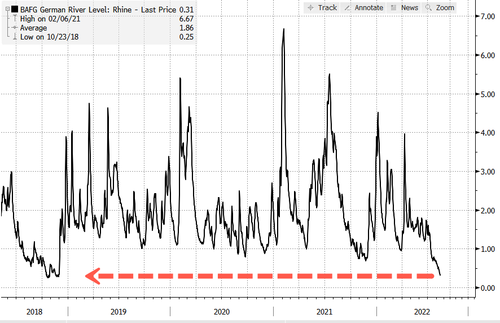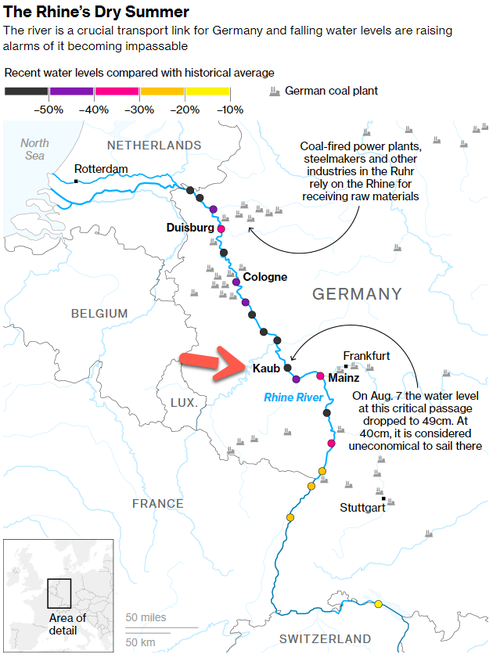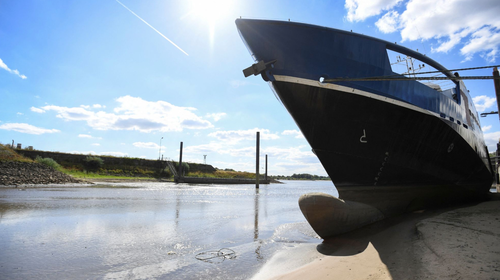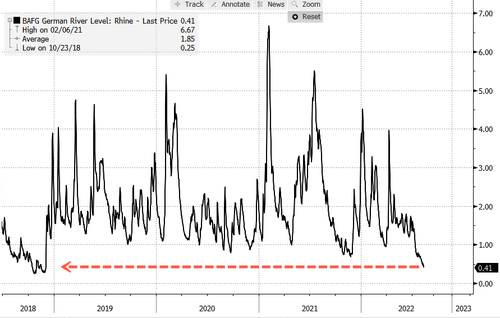The Urethane Blog
Everchem Updates
VOLUME XXI
September 14, 2023
Everchem’s exclusive Closers Only Club is reserved for only the highest caliber brass-baller salesmen in the chemical industry. Watch the hype video and be introduced to the top of the league: — read more
August 16, 2022
Arsenal Capital Partners Announces Final Closes of Two New Funds Totaling $5.4 Billion Fund VI Closes with $4.3 Billion and Surpasses $3.0 Billion Target Inaugural Growth Fund Closes at its Hard Cap with $1.1 Billion and Surpasses $750 Million Target
New York, August 15, 2022 – Arsenal Capital Partners (“Arsenal”), a leading private equity firm that specializes in investments in industrial growth and healthcare companies, announced today that it has completed fundraising for two new funds, totaling $5.4 billion in capital commitments. Arsenal Capital Partners VI LP (together with its parallel funds, “Fund VI”) closed with $4.3 billion in capital commitments, well exceeding its $3.0 billion target of limited partner commitments and well above the size of its $2.4 billion predecessor fund. In addition, Arsenal Capital Partners Growth LP (together with its parallel funds, the “Growth Fund”) closed with $1.1 billion in capital commitments at its hard cap and exceeded its $750 million target of limited partner commitments.
“We are extremely grateful for the support from and relationships with our long-time investors,“ said Terry Mullen, Managing Partner of Arsenal. “We achieved a gratifying, high re-up rate from our existing institutional investors, who on average increased their commitments by 59% from the previous fund, and we are delighted to have attracted an exceptional group of new investors that will further bolster our market-leading institution.”
Over its 22-year history, Arsenal has built a leading private equity institution with two market-leading franchises in the industrials and healthcare sectors. Within its two focus sectors, Arsenal aims to create highly valuable, technology- and innovation-rich, growth companies that are strategically important to their markets. Arsenal’s team of more than 85 professionals and 55 senior advisors combines specialized investment, industry, and operating expertise into one integrated and balanced team to provide differentiated strategic insights, combine diverse perspectives, and leverage expert capabilities.
“The success of these fundraises reflects the strength of our market-leading franchises and our track record of building strategically valuable businesses. We and our investors see exciting opportunities to invest in technology- and innovation-rich companies in the industrial and healthcare sectors,” commented Jeff Kovach, Managing Partner of Arsenal. “Moreover, investors have acknowledged the depth of our domain and technical expertise that provides Arsenal the access, relevance, and credibility to compete and win in our target markets.”
Fund VI will focus on investments in industrials and healthcare businesses with proven technologies and solutions positioned to deliver high performance and value-add to their customers. The Growth Fund will execute a similar strategy in the same markets but pursue investments in next generation, emerging technology businesses poised to apply innovation to generate very high growth. In both of these funds, Arsenal will apply its high-impact company building capabilities to help businesses achieve significant organic growth and facilitate strategic acquisitions to extend their offerings and to solidify leadership positions in their respective markets.
Patricia Grad, Partner and Head of Investor Relations of Arsenal, added, “We are grateful for this global group of institutions and individuals who have supported our firm and greatly appreciate the collaborative dialogue that we had with them as we crafted these investment opportunities, particularly our debut Growth Fund. We look forward to deepening and strengthening our partnerships with our investors for years to come.”
Fund VI and the Growth Fund’s investor base is comprised of leading public and corporate pension plans, family offices, endowments and foundations, and financial institutions, including The University of California’s Office of the Chief Investment Officer (UC Investments), California State Teachers’ Retirement System, California Public Employees’ Retirement Systems, affiliates of APG Asset Management, The Oregon Public Employees Retirement Fund, affiliates of IIP A/S, and Minnesota State Investment Board. Kirkland & Ellis LLP served as legal counsel for Arsenal, Fund VI, and the Growth Fund.
About Arsenal Capital Partners Arsenal Capital Partners is a leading private equity firm that specializes in investments in industrial growth and healthcare companies. Since its inception in 2000, Arsenal has raised institutional equity investment funds totaling over $10 billion, completed more than 250 platform and add-on acquisitions, and achieved more than 30 realizations. The firm works with management teams to build strategically important companies with leading market positions, high growth, and high value-add. For additional information, please visit www.arsenalcapital.com.
Contact: Jackie Schofield at Prosek Partners Pro-Arsenal@prosek.com
August 16, 2022
Arsenal Capital Partners Announces Final Closes of Two New Funds Totaling $5.4 Billion Fund VI Closes with $4.3 Billion and Surpasses $3.0 Billion Target Inaugural Growth Fund Closes at its Hard Cap with $1.1 Billion and Surpasses $750 Million Target
New York, August 15, 2022 – Arsenal Capital Partners (“Arsenal”), a leading private equity firm that specializes in investments in industrial growth and healthcare companies, announced today that it has completed fundraising for two new funds, totaling $5.4 billion in capital commitments. Arsenal Capital Partners VI LP (together with its parallel funds, “Fund VI”) closed with $4.3 billion in capital commitments, well exceeding its $3.0 billion target of limited partner commitments and well above the size of its $2.4 billion predecessor fund. In addition, Arsenal Capital Partners Growth LP (together with its parallel funds, the “Growth Fund”) closed with $1.1 billion in capital commitments at its hard cap and exceeded its $750 million target of limited partner commitments.
“We are extremely grateful for the support from and relationships with our long-time investors,“ said Terry Mullen, Managing Partner of Arsenal. “We achieved a gratifying, high re-up rate from our existing institutional investors, who on average increased their commitments by 59% from the previous fund, and we are delighted to have attracted an exceptional group of new investors that will further bolster our market-leading institution.”
Over its 22-year history, Arsenal has built a leading private equity institution with two market-leading franchises in the industrials and healthcare sectors. Within its two focus sectors, Arsenal aims to create highly valuable, technology- and innovation-rich, growth companies that are strategically important to their markets. Arsenal’s team of more than 85 professionals and 55 senior advisors combines specialized investment, industry, and operating expertise into one integrated and balanced team to provide differentiated strategic insights, combine diverse perspectives, and leverage expert capabilities.
“The success of these fundraises reflects the strength of our market-leading franchises and our track record of building strategically valuable businesses. We and our investors see exciting opportunities to invest in technology- and innovation-rich companies in the industrial and healthcare sectors,” commented Jeff Kovach, Managing Partner of Arsenal. “Moreover, investors have acknowledged the depth of our domain and technical expertise that provides Arsenal the access, relevance, and credibility to compete and win in our target markets.”
Fund VI will focus on investments in industrials and healthcare businesses with proven technologies and solutions positioned to deliver high performance and value-add to their customers. The Growth Fund will execute a similar strategy in the same markets but pursue investments in next generation, emerging technology businesses poised to apply innovation to generate very high growth. In both of these funds, Arsenal will apply its high-impact company building capabilities to help businesses achieve significant organic growth and facilitate strategic acquisitions to extend their offerings and to solidify leadership positions in their respective markets.
Patricia Grad, Partner and Head of Investor Relations of Arsenal, added, “We are grateful for this global group of institutions and individuals who have supported our firm and greatly appreciate the collaborative dialogue that we had with them as we crafted these investment opportunities, particularly our debut Growth Fund. We look forward to deepening and strengthening our partnerships with our investors for years to come.”
Fund VI and the Growth Fund’s investor base is comprised of leading public and corporate pension plans, family offices, endowments and foundations, and financial institutions, including The University of California’s Office of the Chief Investment Officer (UC Investments), California State Teachers’ Retirement System, California Public Employees’ Retirement Systems, affiliates of APG Asset Management, The Oregon Public Employees Retirement Fund, affiliates of IIP A/S, and Minnesota State Investment Board. Kirkland & Ellis LLP served as legal counsel for Arsenal, Fund VI, and the Growth Fund.
About Arsenal Capital Partners Arsenal Capital Partners is a leading private equity firm that specializes in investments in industrial growth and healthcare companies. Since its inception in 2000, Arsenal has raised institutional equity investment funds totaling over $10 billion, completed more than 250 platform and add-on acquisitions, and achieved more than 30 realizations. The firm works with management teams to build strategically important companies with leading market positions, high growth, and high value-add. For additional information, please visit www.arsenalcapital.com.
Contact: Jackie Schofield at Prosek Partners Pro-Arsenal@prosek.com
August 15, 2022
Shocking Footage Reveals Rhine’s Dried Up Riverbeds As Water Levels Continue To Fall
by Tyler DurdenMonday, Aug 15, 2022 – 12:40 PM
Water levels on Germany’s Rhine River continued to decline Monday, hitting a new threshold as an extended period of dry weather exacerbated Europe’s energy-supply crunch. Falling water levels have also revealed shocking photos of partially dried riverbeds that would make the Rhine impassible at certain points, according to Euronews.
“The current water levels on the Middle and Lower Rhine are currently at an exceptionally low level for this time of year,” the Rhine Waterways and Shipping Authority (WSA), said in a statement. “They are the result of the lack of precipitation in recent weeks and months.”
Levels at Kaub, a narrow and shallow point of the river west of Frankfurt, Germany, fell to 30 centimeters (11.8 inches) on Monday and could hold those levels through Thursday.

The Rhine is one of Europe’s most important inland waterways for the transport of fuel and other industrial goods. Many shippers find it uneconomical to operate barges past Kaub when water levels drop below 40 centimeters (15.7 inches).

As of Monday, it wasn’t clear how the drop to 30 centimeters at Kaub would affect river traffic. We noted last week at least one German shipper said barge operations would be halted — and this would impact the flow of industrial goods, especially coal used for power generation.
Last week, we pointed out the top companies exposed to falling water levels that would disrupt barge traffic, implying they would have to resort to trucks or rail to transport goods.

Not all barge traffic has been halted, and some shippers have dramatically reduced cargo sizes on vessels to improve draft to navigate shallow parts of the river — this has caused barge transport prices to skyrocket.
It’s distressing enough to see data on the Rhine’s water levels dropping, but actually seeing footage is reveals just how much impact it’s going to have on transport networks for Germany to move around commodities and goods.




Kaub’s reading is just 6 centimeters (2.4 inches) from 2018’s record low of 25 centimeters (9.9 inches), which then caused the waterway to close and unleashed an economic downturn in the EU’s largest economy. The same is likely to happen and possibly be much worse as a persisting energy crisis amplifies the downturn.
https://www.zerohedge.com/weather/rhine-river-water-levels-sink-further-european-drought-worsens
August 15, 2022
Shocking Footage Reveals Rhine’s Dried Up Riverbeds As Water Levels Continue To Fall
by Tyler DurdenMonday, Aug 15, 2022 – 12:40 PM
Water levels on Germany’s Rhine River continued to decline Monday, hitting a new threshold as an extended period of dry weather exacerbated Europe’s energy-supply crunch. Falling water levels have also revealed shocking photos of partially dried riverbeds that would make the Rhine impassible at certain points, according to Euronews.
“The current water levels on the Middle and Lower Rhine are currently at an exceptionally low level for this time of year,” the Rhine Waterways and Shipping Authority (WSA), said in a statement. “They are the result of the lack of precipitation in recent weeks and months.”
Levels at Kaub, a narrow and shallow point of the river west of Frankfurt, Germany, fell to 30 centimeters (11.8 inches) on Monday and could hold those levels through Thursday.

The Rhine is one of Europe’s most important inland waterways for the transport of fuel and other industrial goods. Many shippers find it uneconomical to operate barges past Kaub when water levels drop below 40 centimeters (15.7 inches).

As of Monday, it wasn’t clear how the drop to 30 centimeters at Kaub would affect river traffic. We noted last week at least one German shipper said barge operations would be halted — and this would impact the flow of industrial goods, especially coal used for power generation.
Last week, we pointed out the top companies exposed to falling water levels that would disrupt barge traffic, implying they would have to resort to trucks or rail to transport goods.

Not all barge traffic has been halted, and some shippers have dramatically reduced cargo sizes on vessels to improve draft to navigate shallow parts of the river — this has caused barge transport prices to skyrocket.
It’s distressing enough to see data on the Rhine’s water levels dropping, but actually seeing footage is reveals just how much impact it’s going to have on transport networks for Germany to move around commodities and goods.




Kaub’s reading is just 6 centimeters (2.4 inches) from 2018’s record low of 25 centimeters (9.9 inches), which then caused the waterway to close and unleashed an economic downturn in the EU’s largest economy. The same is likely to happen and possibly be much worse as a persisting energy crisis amplifies the downturn.
https://www.zerohedge.com/weather/rhine-river-water-levels-sink-further-european-drought-worsens
August 12, 2022
Rhine River One Centimeter From Danger Zone
by Tyler DurdenFriday, Aug 12, 2022 – 09:00 AM
Update (0900ET): The water level on the Rhine River at Kaub, Germany, a key point on the inland waterway west of Frankfurt, is one centimeter (.40 inches) from breaching 40 centimeters (15.7 inches), which below that level could severely impact barge shipments.
Toril Bosoni, head of the IEA’s oil market division, said the Rhine’s low water crisis would remain a problem through the end of the year, making it very challenging for landlocked countries in central and eastern Europe to receive crude product deliveries via barges.
On Friday morning, water levels at Kaub were 41 centimeters (16.15 inches), with new estimates from the German Federal Waterways and Shipping Administration indicating the level could drop even further by the end of the weekend or early next week to 33 centimeters (12.9 inches).

Barges have been hauling “significantly less” goods — including crude oil and coal, but still can transit the waterway, German newspaper Frankfurter Allgemeine Sonntagszeitung said, citing an interview with the head of Federal Waterways and Shipping Administration Hans-Heinrich Witte.
Witte said, “it’s possible, but I don’t think it’s likely” a shipping halt on the waterway would occur. However, a level of 33 centimeters (12.9 inches) in 2018 was enough to shutter parts of the Rhine and spark economic pains for Germany.
Earlier this week, we pointed out that a handful of major companies along the Rhine that relies on barge shipments have made alternative plans, such as trucking and rail, to continue operations.
A reduction in barge transport capacity has increased the cost of shipping exponentially.
Gunther Jaegers, managing director at Rhine stalwart Reederei Jaegers GmbH, told Bloomberg that the barge rate jumped 30% in one day earlier this month. He said, “I’ve never, ever, seen this … it’s insane.”
Joachim Hessler, managing director at shipping company Maintank GmbH, said declining water levels at Kaub could soon “mean ‘game over’ for more and more barges.”
For some context to the last closure of the waterway, current water levels for this time in 2018 are much lower.
The Kiel Institute for the World Economy warned barge disruptions would likely dent German economic putout.
* * *
Water levels on the Rhine River are set to drop below a critically low point by the end of this week, making it increasingly difficult for barge transport of goods — including crude oil and coal — as one of the worst energy crises in decades batters Europe.
We noted Wednesday that further up the Rhine is Kaub, Germany, a bottleneck for barges where the river is very narrow and shallow and could fall below 40 centimeters (15.7 inches) by the end of the week. A drop below that level would make it nearly impossible for barges to transit the stretch of the waterway.

New data from the German Federal Waterways and Shipping Administration expects water levels at the key waypoint west of Frankfurt could plunge to 33 centimeters (12.9 inches) by Monday. This extremely low level would mean most barges hauling commodities on Europe’s most important inland waterway that snakes 800 miles (1,300 kilometers) from the Swiss Alps through the largest industrial areas on the continent would be unable to sail through Kaub.

“This is particularly the case for the Rhine, whose nautical bottleneck at Kaub has very low water levels but which remains navigable for ships with small drafts,” said Tim Alexandrin, a spokesman for Germany’s Transport Ministry. Though by the end of the weekend or early next week, Kaub could potentially fall to 33 centimeters would put it within centimeters of the low levels recorded in October 2018 that led to a shuttering of the waterway.
“The situation is quite dramatic, but not as dramatic yet as in 2018,” said Christian Lorenz, a spokesman for the German logistics company HGK.
Factories on the Rhine are heavily reliant on barge transport. About 4% of freight moved in Germany is carried on waterways, including the Rhine. If sinking water levels at Kaub breach 40 centimeters and fall further early next week, then Germany’s industrial heartland would be in trouble, and the energy crisis would be exacerbated.
The 2018 closure of the Kaub area shaved .2 percent off German GDP that year, Deutsche Bank economist Marc Schattenberg told AFP.
“The low levels have come much earlier this time,” Schattenberg said, adding, “if problems we are now observing last longer (than in 2018), the loss of economic value becomes all the more serious.”
Last week, multiple companies along the Rhine reportedly shifted barge transport to trucking and rail networks to avoid logistical headaches on the river.

The International Energy Agency warned Thursday that low water levels at Kaub could worsen supply chain disruptions through late this year.
“The product supply situation in central and eastern Europe was already very tight before this latest crisis,” Toril Bosoni, head of the IEA’s oil market division, said in a Bloomberg television interview. “The low water levels make it more costly to get fuel from the seaborne market into that region.”
“This is concerning for landlocked countries that normally get fuel on the Rhine, Bosoni added. “So we’re expecting this situation to continue towards the end of the year.”
Andrew Kenningham, the chief Europe economist for Capital Economics, said Germany’s economic growth will be flat in Q3 and a contraction in the last three months of the year, “the low water level in the Rhine simply makes a recession even more likely.”
